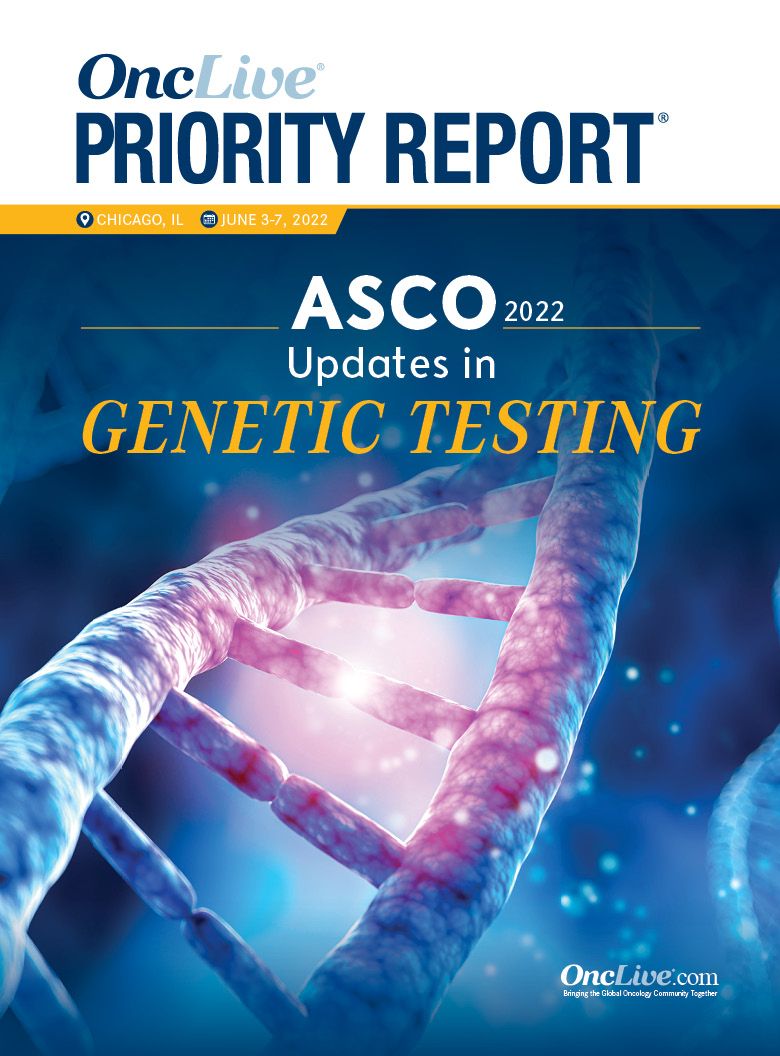Publication
Article
Supplements and Featured Publications
Molecular Testing Continues to Predict Treatment Efficacy in Ovarian Cancer
Author(s):
Bradley J. Monk, MD, FACS, FACOG, discusses the importance of helping patients make informed decisions about their care options and the future role of antibody-drug conjugate targets in the biomarker testing arena.
Bradley J. Monk, MD, FACS, FACOG

PARP inhibitors are expanding the treatment paradigm for patients with ovarian cancer, according to Bradley J. Monk, MD, FACS, FACOG, who emphasized that testing for the BRCA mutations remains one of the most reliable ways to determine which patients may respond best to the therapy.
“Effective treatments start with molecular testing, where you test the germline [of] the tumor,” Monk said. “Every patient with epithelial, tubulin, or peritoneal ovarian cancer should get germline testing for BRCA [mutations] and the other hereditary genes.”
In an interview with OncLive®, Monk discussed the importance of helping patients make informed decisions about their care options and the future role of antibody-drug conjugate (ADC) targets in the biomarker testing arena.
Monk is a professor in the Division of Gynecologic Oncology at Arizona Oncology, of the US Oncology Network, at the University of Arizona College of Medicine; a professor at Creighton University School of Medicine at St. Joseph’s Hospital; the medical director of US Oncology Research Network – Gynecologic Program; the vice-president and a member of the board of directors of the GOG-Foundation; and the co-director of GOG-Partners.
OncLive®: How can biomarker testing help determine the most effective treatment methods for patients with ovarian cancer?
Monk: The companion diagnostic test, MyRisk, [evaluates] 48 genes. In fact, if you do MyRisk, and the results include anything but a BRCA mutation, you can pivot to MyChoice, which is the [homologous recombination deficiency (HRD)] test that was used in the [phase 3] PAOLA-1 [NCT02477644], PRIMA [NCT02655016] and NOVA [NCT01847274] trials. Now, Myriad Genetics has launched a platform for giving precision medicine called Precise [Oncology Solutions]. This platform also gives [us access to] immunohistochemistry [IHC].
There are other good labs, such as Foundation Medicine, which was used in the [phase 3] ARIEL3 [NCT01968213] and ATHENA [NCT03522246] trials. There’s also Caris [Life Sciences], Tempus, Invitae, [and more]. What’s most important is testing. The lab is also important, but not the most important.
I want to identify those patients who have not been tested. You test to protect the family and the patient. If a patient has a BRCA mutation [found through germline testing], she may get breast cancer, and you need to protect her. If she has children or relatives, you might protect them. In addition, [testing helps you] know the activity of a PARP inhibitor, because PARP inhibitors work better in BRCA-mutated tumors, but they still work in non–BRCA-mutated tumors.
You can also enroll the patient in a clinical trial because some of our clinical trials do not allow for BRCA-positive patients, and others enrich for BRCA-positive patients.
Where does BRCA stand as a biomarker for PARP inhibitors?
Biomarkers are important in the decision to use a PARP inhibitor. In the PRIMA and ATHENA trials, PARP inhibitors worked in all-comers. However, they work better in patients with BRCA mutations, and they work a little less well in patients with non–BRCA-mutated HRD-positive tumors. [HRD-positive tumors] can be either BRCA-mutatedor non–BRCA-mutated. PARP inhibitors can also work in the HRD-negative population.
[You may want to use PARP inhibitors] regardless of the biomarkers. However, this is a shared decision among the patient, her family, and the provider. The level at which you recommend a PARP inhibitor depends on the molecular signature. If a patient has HRD-negative disease, this treatment might work and be good for them. [You should mention that] it doesn’t work in everyone and list the adverse effects [AEs] to allow the patient can make the right decision for herself.
Conversely, you may [tell a patient that since they] have a BRCA mutation, PARP inhibitors can transform their outcome. [However], when you tell her the AEs, she may say she doesn’t want those. [She will make the right decision for herself as an individual. However, recommending PARP inhibitors is important] because to not use a PARP inhibitor in a patient with a BRCA mutation [increases the danger of the] ovarian cancer.
Even in patients with non–BRCA-mutated HRD-positive tumors, PARP inhibitors have become the standard of care. If a patient doesn’t want to have PARP inhibitors, [help her understand the benefits of this treatment so she can make an informed decision].
What other resources can physicians use to enhance their genetic testing processes?
As biomarker testing has evolved in ovarian cancer, we have a good understanding of HRD tests, although it’s not perfect. We also need to get functional tests and liquid tests, so we don’t need to analyze the tumor. We’re efficient, and we do a good job with germline testing.
However, the next evolution in biomarker testing will be the targets for ADCs. Today, patients need to give their signed consent because these are research medications. They get excited [at the idea of a potential treatment], but then there’s disappointment if they don’t have the biomarker.
However, once these ADCs get approved, the biomarkers, such as folate receptor alpha, will automatically be tested. Every time you send a tumor to a lab, you’ll get the report back, and it’ll give you the HRD score, the IHC, and the ADC target. [This will mitigate patient disappointment, as you’ll be more aware of which treatments are good for which patients.] If a patient [has a disease type] where platinum-based chemotherapy is not an option, you can profile their tumor and tell them if they have a target for a certain ADC that can shrink their tumor, and is tolerable, accessible, and FDA approved. And then you can roll. That is the evolution. We already do genomics, we already do IHC, but we need to focus on ADC targets.
The beauty of Myriad Genetics is that they can do comprehensive germline and tissue testing, which improves the workflow. You don’t have to send the blood to one lab and the tumor to another lab, fill out several forms, get different authorizations, and so on. The Myriad Genetics Precise Oncology Solutions, MyRisk, and MyChoice all together in 1 platform is an efficient model. We’re all trying to be as efficient and cost-effective as possible in our practices.










